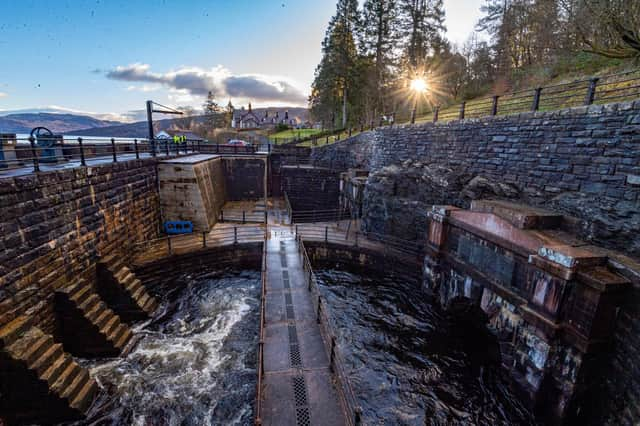£20m upgrade to East Dunbartonshire water supplies now complete


The £20 million project has been undertaken to improve and refurbish parts of the two aqueducts – 34 miles and 23.5 miles long respectively - which take water from Loch Katrine to two of Scotland’s biggest water treatment works at Balmore and Milngavie.
It aims to help improve the security of the water supply to customers for generations to come.
Advertisement
Hide AdAdvertisement
Hide AdThe investment was the latest phase of the biggest upgrade to the megastructure since the first aqueduct was built in 1859, when it was hailed as one of the world’s greatest engineering feats of its day.
A total of 17 miles of tunnel sections had concrete and masonry repairs and 10 bridge sections had masonry and metalwork repairs carried out by a team of about 35 workers over the past two years, with a three-month break due to the Covid pandemic.
The aqueduct takes raw water by gravity, with no need for pumping, along its two routes from the south shore of Loch Katrine to the Milngavie and Balmore Water Treatment Works (WTW), just north of Glasgow which treat about 550m litres of water every day.
That’s enough to fill more than 275 Olympic swimming pools or more than six million baths.
Advertisement
Hide AdAdvertisement
Hide AdThe original aqueduct includes tunnels through mountainous terrain in the shadow of Ben Lomond and bridges over the valleys of the Duchray, Endrick and Blane watercourses.
It was built to provide Glasgow with its first proper water supply.
A second aqueduct was constructed to accommodate the rapid expansion of Glasgow in the late 19th century. They are as much as six miles apart on some stretches, just five metres apart on others.
Milngavie WTW serves more than 700,000 people across much of the Glasgow area.
Advertisement
Hide AdAdvertisement
Hide AdBalmore WTW serves about 600,000 customers in areas from Bishopbriggs, Lennoxtown and Torrance in the west to parts of north east Glasgow and Cumbernauld, north Motherwell. and Linlithgow, Bo’ness and parts of Grangemouth in the east.